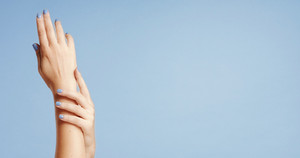Introduction:
Skin care is an essential aspect of our daily routine. It not only helps us maintain a healthy and glowing skin but also improves our overall appearance. However, there are certain issues that can affect the texture and tone of our skin, including cellulite. Cellulite refers to the dimpled or cottage cheese-like appearance on the thighs, legs, arms, stomach, and buttocks. In this blog post, we will discuss how to get rid of cellulite effectively using various tips and tricks.
What Is Cellulite?
Cellulite is caused by fat deposits that push against connective tissue beneath the skin, creating those unsightly lumps and bumps. It usually occurs in women due to hormonal changes, genetics, poor diet, lack of exercise, and aging. While men may experience cellulite too, it’s less common.
Causes Of Cellulite
There are several factors that contribute to the development of cellulite such as:
1. Hormones – Estrogen and progesterone play a crucial role in the storage and distribution of fat in the body. When these hormones are out of balance, they can lead to the formation of cellulite.
2. Genetics – Our genetic makeup also plays a significant role in determining whether we develop cellulite or not. If someone in your family has cellulite, you might be more likely to have it too.
3. Lifestyle Factors – Poor diet, lack of exercise, smoking, and excessive alcohol consumption can increase the risk of developing cellulite.
4. Age – As we age, our skin loses elasticity, making it easier for fat to bulge through the surface and create the orange peel effect.
Symptoms Of Cellulite
The most obvious symptom of cellulite is its visual appearance – those lumpy, dimpled areas on the skin. However, some people may also experience pain, tenderness, or swelling around the affected area.
Treatment Options For Cellulite
While there is no permanent cure for cellulite, there are several treatment options available that can help reduce its appearance. These include:
1. Topical Creams And Gels – There are many creams and gels available that claim to improve the appearance of cellulite. Some contain ingredients like caffeine, retinol, or vitamin E which can help tighten and firm the skin.
2. Massage Therapy – A massage therapist can use specialized techniques to break up and release trapped fluid and toxins from the cells. This can help reduce the appearance of cellulite.
3. Laser Treatments – High intensity lasers can penetrate deep into the skin to break down fat cells and stimulate collagen production. This can result in firmer, smoother skin with reduced cellulite visibility.
Prevention Tips For Cellulite
To prevent cellulite from forming or getting worse, here are some tips you can follow:
1. Stay Active – Regular exercise can help improve blood flow, increase circulation, and promote weight loss. All of these things can help reduce the appearance of cellulite.
2. Maintain A Healthy Weight – Being overweight or obese can worsen the appearance of cellulite. By maintaining a healthy weight, you can minimize the amount of fat stored underneath the skin.
3. Eat A Balanced Diet – A balanced diet rich in fruits, vegetables, whole grains, lean protein, and healthy fats can provide your body with the nutrients it needs to stay healthy.
4. Drink Enough Water – Drinking enough water can help flush out toxins and hydrate the skin from within. This can result in softer, smoother skin with fewer visible signs of cellulite.



